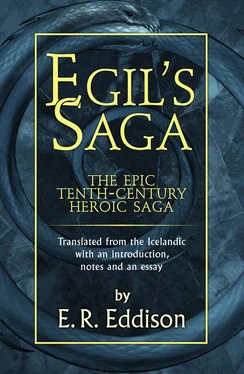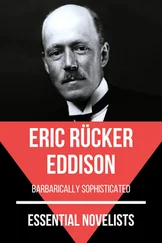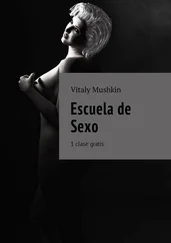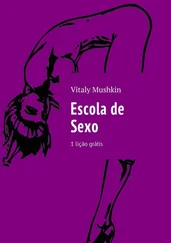SAPPHO
“Not one overt word of horror or of warning or of admonishment, only the bare clear record; but beyond it the poising of scales so delicate and so sure that the secrets of every heart are revealed and the judgement never in doubt.”
WALTER DE LA MARE
(from Desert Islands : on the romance enshrined in the Old Testament)
INTRODUCTION
THE HEROIC AGE AND THE SAGAS
OF the five major Íslendinga Sögur (Njála, Egla, Laxdæla, Eyrbyggja , and Grettla ) Egil’s is at once the most aristocratic in spirit, the most pagan, and (with the single exception of Njála ) the most perfect as a work of art. That is as much as to say that it is, of all five, the most typically Icelandic. For Iceland means three things: first, on the political field—aristocratic individualism of an uncompromising kind; secondly, in its broad outlook on human life and destiny—paganism; and thirdly, in art—a peculiar and in itself highly perfected form of prose narrative. When we consider that the growing time, the flowering and the decay of this Iceland were comprised within a period beginning in the ninth century in the reign of Alfred the Great, and ending in the thirteenth, it is clear that the whole thing was only made possible by the accident of the physical isolation of Iceland from the rest of Europe. For there was no room in mediaeval Europe for an aristocracy not feudal but anarchical, or for a paganism so deep and so tolerant that it lived on, essentially unchanged, for generations after it had adopted as its own the formulas and practices of Christianity. These things could not have developed in a society exposed at close quarters to the huge impersonal ideals of Empire and Papacy and to the all-embracing system of dogma and ethic of the mediaeval church; while the dead weight of Latin culture made it impossible for an original literature, owing nothing to Greece or Rome, to spring up and attain to classic perfection in the vulgar tongue.
It is as a background to Egil’s Saga , which is the main figure in our picture, that I propose now to sketch roughly what seem to me the essential features of this profoundly interesting piece of landscape which, in the country of the mind, we may call Iceland. The sketch must be meagre and inadequate; it contains, I am afraid, nothing that is new; but I shall do my best to see that it contains nothing that is not true.
THE REPUBLIC
Politically, we may say that it was King Harald Hairfair who created the Icelandic commonwealth; not by his will, indeed, but by his act. He broke down by conquest the old order in Norway, and raised up in its place a central and autocratic power wielded by himself as sole King through subordinates, his own creatures and instruments. To the old nobility this change was the greatest of evils: in every folkland instead of their old folk-king, not much beyond themselves in power and honour, to whom they owed a loose allegiance and upholding in war, they were now faced with Harald’s earl and tax-gatherer. Most hateful of all was the King’s claiming of the odal rights, the freehold land-rights by which the land followed the family from generation to generation. He took away these odal rights, and gave them back only in return for taxes and other services. The great men (including small kings, earls, hersirs, and landowners of lesser rank) had therefore the choice of three things: to withstand the King in battle, to renounce their freedom and become his men, or to flee the land. The first was shown by repeated experience, extending over some twelve years and ending with the great sea-fight at Hafrsfirth, to be impossible. The second was accepted by many. But there were large numbers who preferred the third choice, to leave the country. “Because of that unpeace many noble men fled from their lands out of Norway; some east over the Keel, some West-over-the-sea. Some there were withal who in winter kept themselves in the South-isles *or the Orkneys, but in summer harried in Norway and wrought much scathe in the kingdom of Harald the King” (Eb. 1) †. But after Hafrsfirth, Harald cleared out the vikings in their western lairs and set his own earls in the Orkneys. Men had then to turn their eyes to more distant lands, and it was at this time, about 874, that Iceland was discovered. To that hard and lonely island in the high Atlantic there was for the next two generations an almost continuous stream of settlement from Norway, both direct and by way of the western lands. By the end of that time the country was stocked with a population of perhaps 50,000. A small population: but so was Athens small, and the Greek cities of Ionia. Eugenically, it may be doubted whether any country in history has possessed a population of a higher quality. For the men who settled Iceland were precisely the pick and flower of the Norse race; precisely those whose fierce spirit of independence and freedom could not abide the new ‘enslavement’ in Norway, and who chose loss of lands and goods, and banishment in an unknown country, rather than go under King Harald’s hand. To match the circumstances we must picture the sailing of a Mayflower not in Stuart but in Elizabethan times, and give her for passengers not William Penn and his Pilgrim Fathers, but, driven from England by some strange tyranny till then unheard of, men of the mind and temper of Raleigh and Drake, Sidney and Marlowe.
Thus Harald Hairfair, intent on consolidating his kingdom in Norway, had laid the foundations, far across the seas, of the Ionia of the North. The process is described, not in general terms but vividly in the actions and clashes of individual persons, in the first twenty-seven chapters of our saga. In the tragedy of Thorolf Kveldulfson (Egil’s father’s brother) and in the events leading to the decision of old Kveldulf and his family to leave Norway and start again in Iceland, is gathered up the whole history of the quarrel between the King and the great houses. The new land was apt by nature for the strange republic it was destined to nurture. Habitable enough and generally of a temperate climate in the dales and open country towards the coast, it rose inland to a high central region of dreadful wolds of lava and black sand and stone and fog and snow, where sometimes a traveller must carry every handful of fodder for his horses; for that desert of many days’ journey supports neither man nor beast. There were thus great distances within the land, and great physical barriers, so that each man might in a manner be king in his own countryside: and so, in a manner, he was.
The first settlers (landnámamenn) took land far and wide in the districts where they put in with their ships, if they liked the look of it; afterwards they portioned it out in estates among their friends and dependents, as Skallagrim did with his great land-takings in Burgfirth, chs. XXVIII–XXX. The settler himself was by general acceptance lord of the countryside, and temple-priest. Goði , which is commonly and properly translated ‘priest’, had under the old faith no sacerdotal connotation: the ‘priest’ was squire and parson in one. The position is well illustrated by the account of the settlement of the Thorsness country in Snaefellsness by Thorolf Mostbeard, the greatgrandfather of Snorri the Priest. Thorolf was lord of the island of Most in the west of Norway, and “had the ward of Thor’s temple there in the island, and was a great friend of Thor”. He gave aid to Biorn, an outlaw of King Harald’s, and so came under the wrath of the King. He “made a great sacrifice, and asked of Thor his well-beloved friend whether he should make peace with the King or get him gone from out the land and seek other fortunes. But the Word showed Thorolf to Iceland.” He followed that Word: and when he came in his ship off Iceland, he “cast overboard the pillars of his high-seat, which had been in the temple, and on one of them was Thor carven; withal he spake over them, that there he would abide in Iceland, whereas Thor should let those pillars come aland”. The wooden pillars came aland on the outermost point of a ness in Broadfirth, that has ever since been called Thorsness. “Thereafter Thorolf fared with fire through his land *out from Staff-river in the west, and east to that river which is now called Thors-river, and settled his shipmates there. But he set up for himself a great house at Templewick which he called Templestead. There he let build a temple, and a mighty house it was…. To that temple must all men pay toll, and be bound to follow the temple-priest in all farings, even as are now the thingmen of chiefs. But the chief must uphold the temple at his own charges, so that it should not go to waste, and hold therein feasts of sacrifice” (Eb. 4).
Читать дальше












